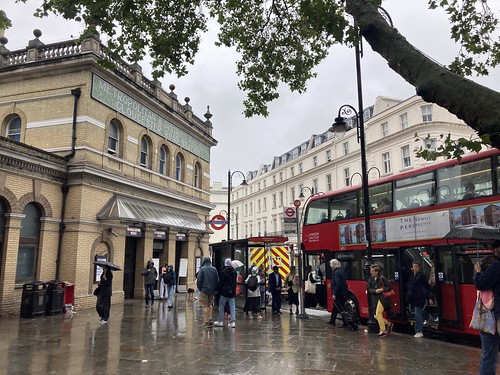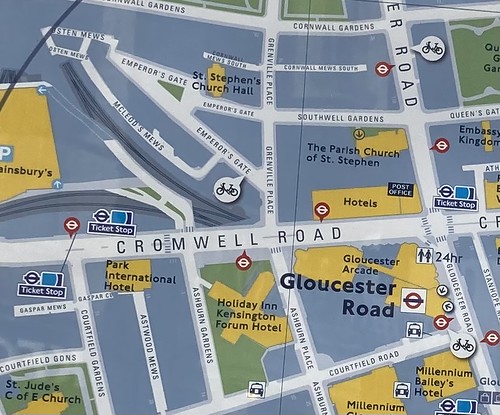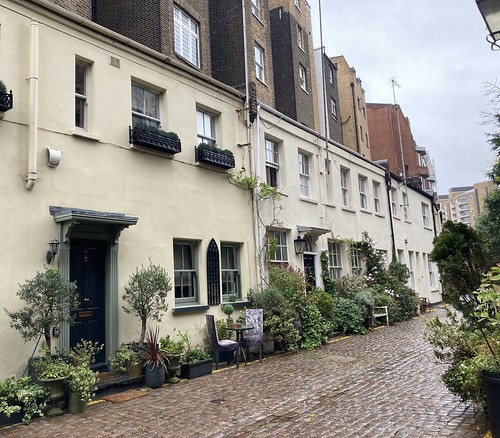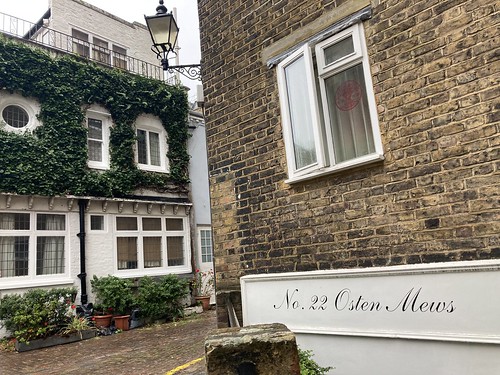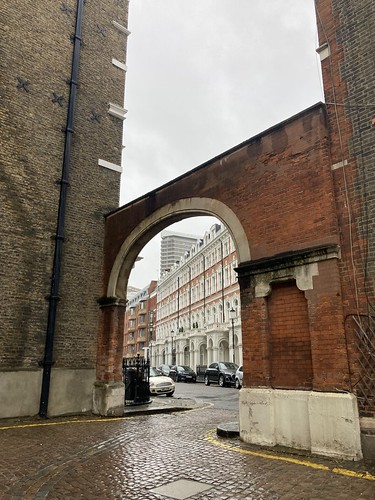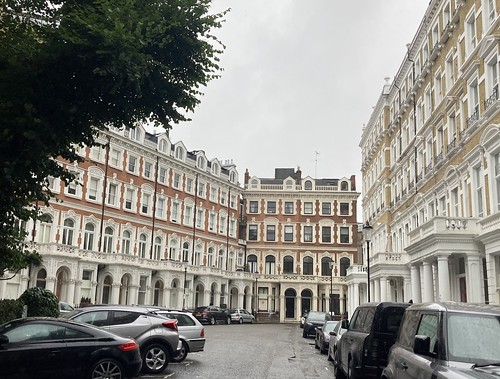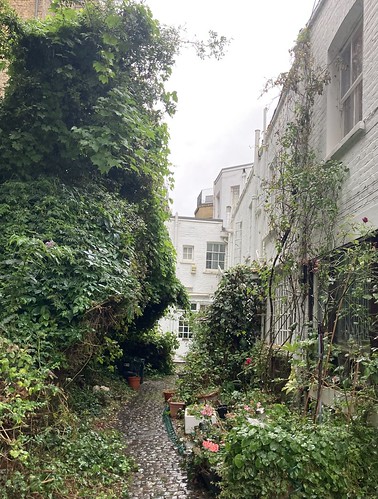London July 22
We arrived at London’s Heathrow airport a day after leaving California and tried to get off the Underground connection at Gloucester Road, the station right by our hotel. But the train didn’t stop until the next station, South Kensington. After the confinement of the airplane, the walk back in light rain pushing and pulling our rolly suitcases along a street of Edwardian rowhouses, large London Plane trees and a locked private park felt like stimulating exercise rather inconvenience, but also a traveller’s warning to be ready for the unexpected.
The Bailey’s Hotel, a 150 year-old Victorian building almost demolished but recently restored by an international corporation, maintained the unpretentious and (relatively) affordable elegance we were hoping for. The immediate neighborhood offered dozens of restaurants with cuisines from around the world, confirming London’s role, no longer as the heart of Empire, but as magnet for international tourism and foreign investment.
After an early dinner at the Bugis, the hotel’s Singaporean restaurant, with a dish of Dong Po Rou which broke my normal vegetarian diet, I was too excited to go to bed in our compact airshaft-facing room and took a walk, guided by the map posted in front of the shuttered subway station across the road.
It led me past the Holiday Inn, the one ugly high-rise in the otherwise expensively preserved neighborhood, to some narrow cobbled streets adjoining a partially exposed underground train line.
Their modestly appointed but immaculate residences were fronted by potted plants and trees and tiny outdoor café tables and chairs.
The street signs indicated that these were “Mews,” which I learned later were rows of fashionable flats that once had been the alley-facing carriage houses of larger homes long ago replaced.
At the end of one street I came upon a relic of its former use in a precious auto repair shop.
Then, passing under a grandiose archway I was surrounded by an enclosure of densely decorated five-story mansions. Another street sign said “Emperor’s Gate,” emphasizing the contrast between the quaint variety of the mews and the imperial symmetry of what seemed like a palace courtyard.
Through a street exit from this opulent square, I approached a gothic style church, partially engulfed by trees and vines, the only person I’d seen so far hunched next to a side door, smoking a cigarette. After snooping around back, where I found a daycare center’s shabby play yard, I asked if there was an entrance to the church. He said, “It’s locked, I’m here for an AA meeting in the basement.” The sign by the front gate identified this as St. Stephens Church Hall, which also functioned as an NHS medical clinic.
Proceeding through another arch out to the public street I rounded the corner at the rear of the Church Hall and discovered the dishevelled jungle of an adjoining mews.
Satisfied with the neighborhood exploration, I returned to the hotel for my first European night’s sleep.



